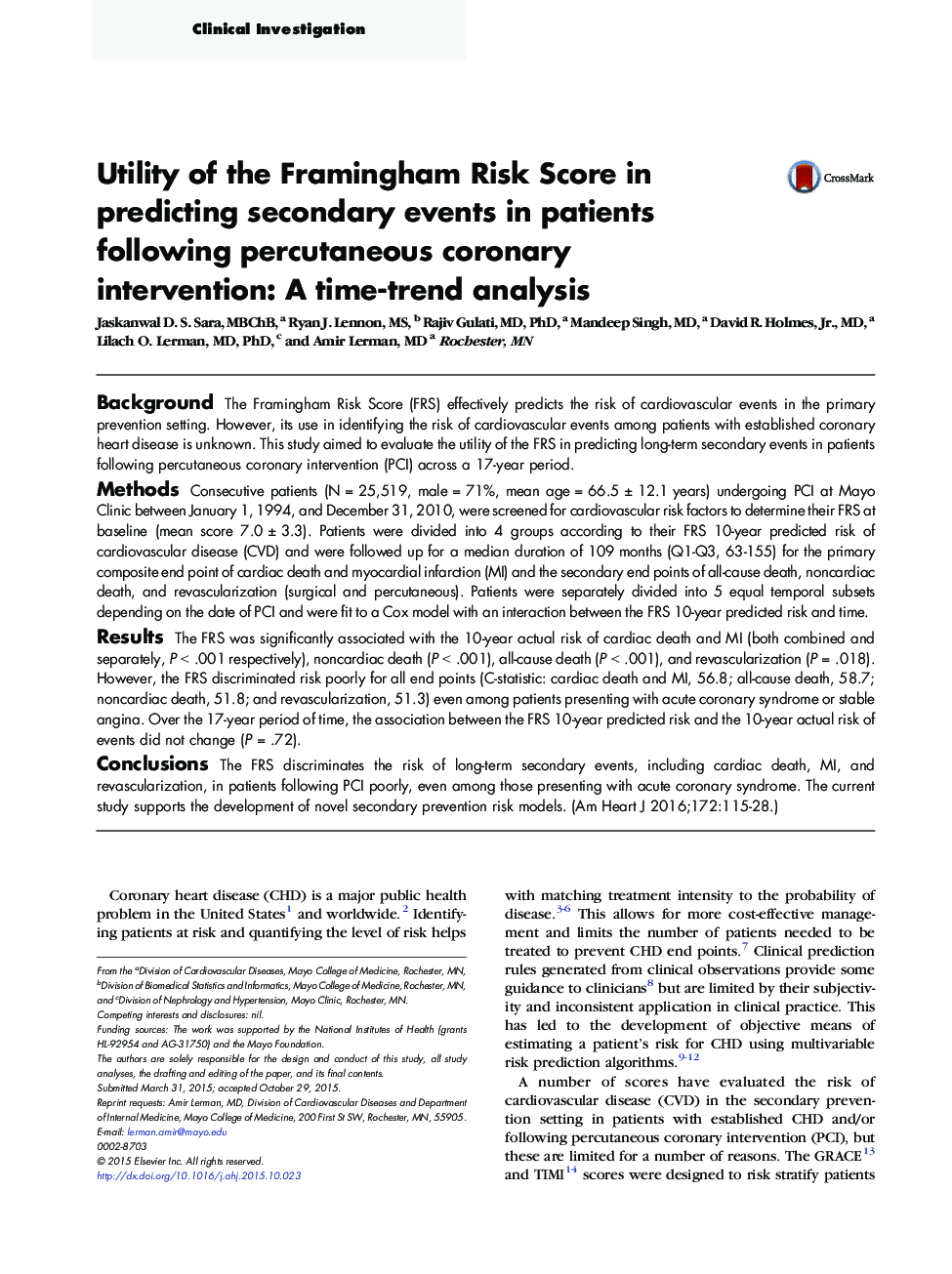| Article ID | Journal | Published Year | Pages | File Type |
|---|---|---|---|---|
| 5927996 | American Heart Journal | 2016 | 14 Pages |
BackgroundThe Framingham Risk Score (FRS) effectively predicts the risk of cardiovascular events in the primary prevention setting. However, its use in identifying the risk of cardiovascular events among patients with established coronary heart disease is unknown. This study aimed to evaluate the utility of the FRS in predicting long-term secondary events in patients following percutaneous coronary intervention (PCI) across a 17-year period.MethodsConsecutive patients (N = 25,519, male = 71%, mean age = 66.5 ± 12.1 years) undergoing PCI at Mayo Clinic between January 1, 1994, and December 31, 2010, were screened for cardiovascular risk factors to determine their FRS at baseline (mean score 7.0 ± 3.3). Patients were divided into 4 groups according to their FRS 10-year predicted risk of cardiovascular disease (CVD) and were followed up for a median duration of 109 months (Q1-Q3, 63-155) for the primary composite end point of cardiac death and myocardial infarction (MI) and the secondary end points of all-cause death, noncardiac death, and revascularization (surgical and percutaneous). Patients were separately divided into 5 equal temporal subsets depending on the date of PCI and were fit to a Cox model with an interaction between the FRS 10-year predicted risk and time.ResultsThe FRS was significantly associated with the 10-year actual risk of cardiac death and MI (both combined and separately, P < .001 respectively), noncardiac death (P < .001), all-cause death (P < .001), and revascularization (P = .018). However, the FRS discriminated risk poorly for all end points (C-statistic: cardiac death and MI, 56.8; all-cause death, 58.7; noncardiac death, 51.8; and revascularization, 51.3) even among patients presenting with acute coronary syndrome or stable angina. Over the 17-year period of time, the association between the FRS 10-year predicted risk and the 10-year actual risk of events did not change (P = .72).ConclusionsThe FRS discriminates the risk of long-term secondary events, including cardiac death, MI, and revascularization, in patients following PCI poorly, even among those presenting with acute coronary syndrome. The current study supports the development of novel secondary prevention risk models.
